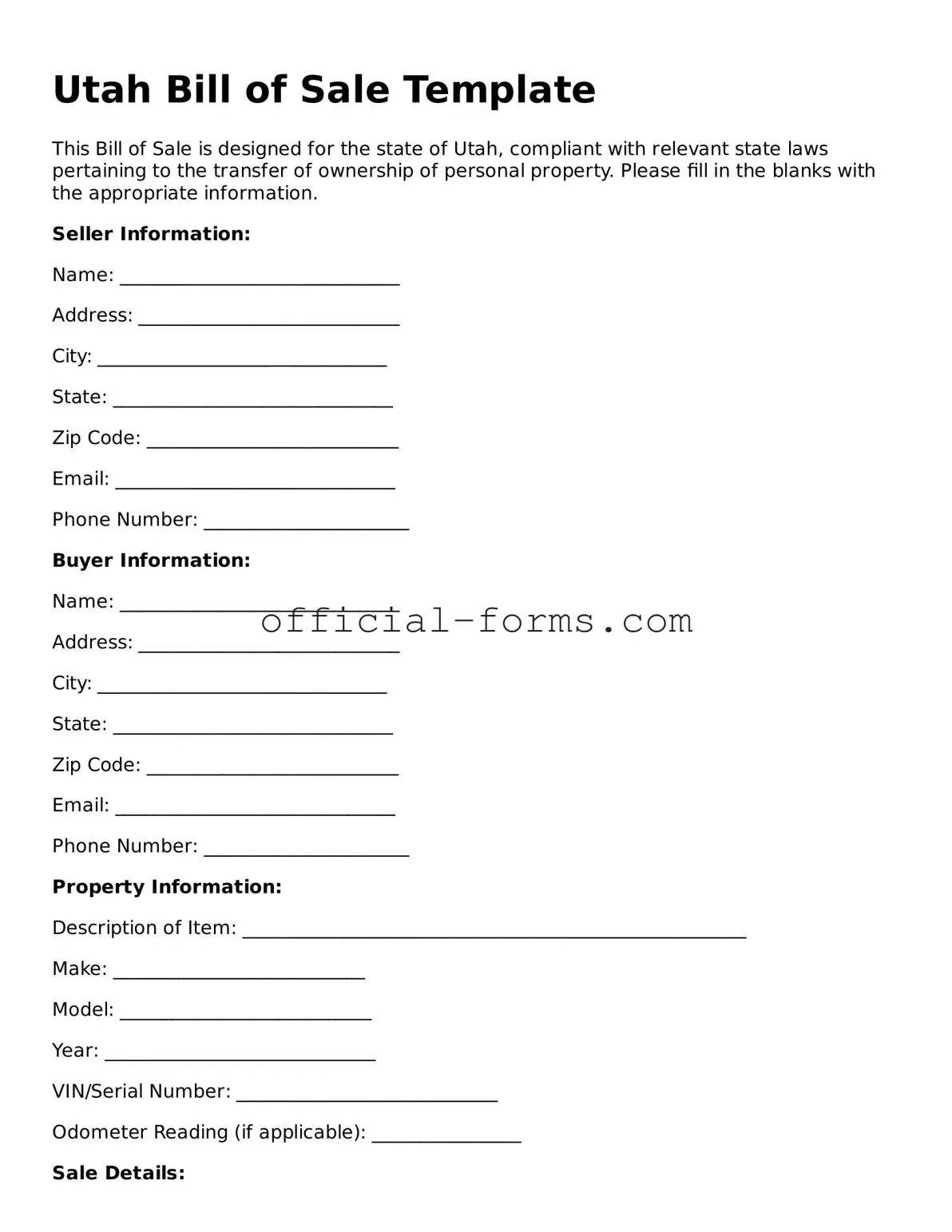When completing the Utah Bill of Sale form, many individuals make common mistakes that can lead to complications down the line. One frequent error is failing to include all necessary information about the buyer and seller. Both parties' names, addresses, and contact details should be clearly stated. Omitting any of this information can create confusion or disputes later.
Another mistake is neglecting to provide a complete description of the item being sold. This includes the make, model, year, and Vehicle Identification Number (VIN) for vehicles. A vague description can lead to misunderstandings about what is being sold, which could complicate the transaction.
People often forget to include the purchase price. This detail is crucial as it establishes the value of the transaction. Without it, the Bill of Sale may not serve its intended purpose, especially in legal situations or when registering the item.
Additionally, not signing the document is a common oversight. Both the buyer and seller must sign the Bill of Sale to validate the transaction. A missing signature can render the document ineffective and may lead to disputes about the sale.
Another frequent error is failing to date the form. The date of the transaction is essential for record-keeping and can affect the legality of the sale. Without a date, it may be difficult to prove when the transfer of ownership occurred.
Some individuals also forget to make copies of the completed Bill of Sale. Having a copy for both parties is important for their records. If any issues arise later, both the buyer and seller will benefit from having a signed document as proof of the transaction.
Using incorrect or outdated forms can lead to problems as well. It is important to ensure that the most current version of the Utah Bill of Sale form is being used. Using an outdated form might not comply with current laws and regulations.
Lastly, failing to check for typos or inaccuracies can cause significant issues. Even small errors in names, addresses, or item descriptions can lead to legal complications. Taking the time to review the form carefully before submission can help avoid these pitfalls.
